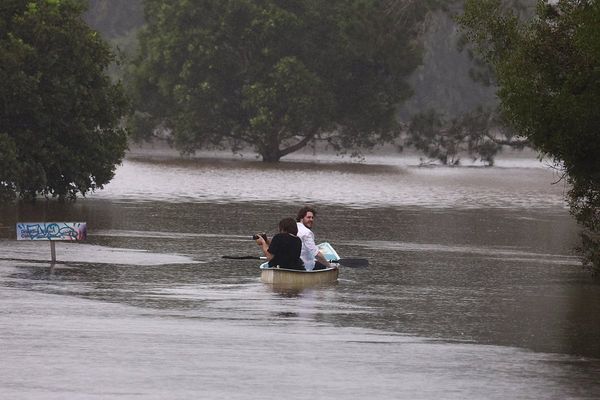
The most powerful typhoon to hit South Korea in years has battered its southern region, dumping almost a metre (3ft) of rain, destroying roads and bringing down power lines after thousands of people were evacuated to safer ground.
Typhoon Hinnamnor skirted the resort island of Jeju and made landfall in the country’s south near the port of Busan early on Tuesday, authorities said, with heavy rain and strong winds expected to continue throughout the day.
The storm follows record rain around the capital Seoul in August that caused severe flooding; at least 14 people were killed.
Prime Minister Han Duk-soo called for evacuations in areas vulnerable to flooding, saying Hinnamnor could end up being a “historically strong typhoon that we never experienced before”.
Since Sunday, more than 94cm (37 inches) of rain has fallen in central Jeju, where winds peaked at 155 kilometres per hour (96 miles per hour).
Some 20,000 homes were left without electricity in southern districts as the wind brought down power cables.
As of Tuesday morning, more than 3,463 people had been evacuated, and officials were advising or ordering 14,000 more people to leave their homes.

Authorities said a 25-year-old man had been reported missing in the city of Ulsan after he fell into the fast-moving waters of a stream swollen by the torrential rain. No other casualties were reported.
President Yoon Suk-yeol convened response meetings and urged officials to take precautions until the typhoon had completely gone, his spokesperson said.
More than 600 schools were closed or moved classes online while hundreds of flights and dozens of ferry services were cancelled. Fishing boats remained in port.
Meteorologists said the typhoon was moving northeast towards the sea with winds of up to 144km/h (89mph) and was expected to pass about 400km (249 miles) northwest of the Japanese island of Hokkaido.
North Korea also braced for damage from the typhoon, with state media reporting “all-out efforts” to reduce the effect of flooding and landslides.
The state-run Korean Central News Agency said leader Kim Jong Un, during government meetings, had issued unspecified “detailed tasks” to improve the country’s disaster response capacity but did not elaborate on the plans.
In the two-day meeting, Kim also discussed releasing water from a dam near its border with South Korea.
Seoul has repeatedly urged North Korea to give notice before releasing water from the dam because of the risk of flooding downstream.







